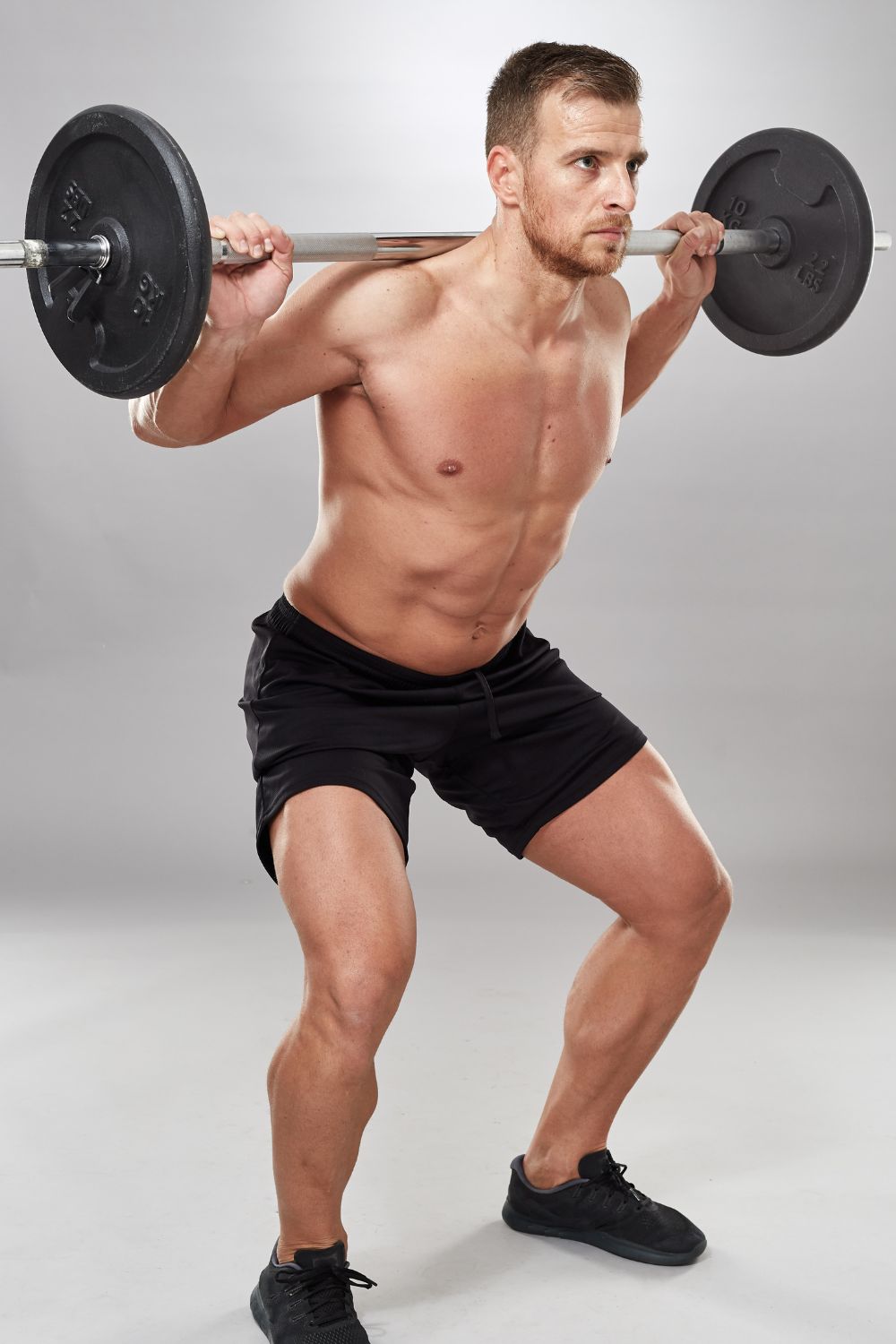The debate over squat stance for athletic performance is rich with opinions and studies, yet a definitive consensus remains elusive. Squats, a fundamental exercise in strength and conditioning, can be performed with various stances: narrow, wide, or shoulder-width. Each stance targets muscles differently and can impact athletic performance in distinct ways.
Understanding Stances:
Wide Stance Squat:
Targets: Emphasizes the adductors and glutes.
Benefits: Greater hip activation and potential for heavier loads.
Consideration: May limit depth and mobility for some individuals.
Narrow Stance Squat:
Targets: Places more stress on quadriceps.
Benefits: Allows for increased depth and may improve vertical force production.
Consideration: Potential stress on the knee joints.
Shoulder-Width Stance Squat:
Targets: Balances quad and glute activation.
Benefits: Offers a middle ground between the wide and narrow stances.
Consideration: May not excel in maximizing muscle activation compared to extreme stances.
Impact on Athletic Performance:
Sport-Specificity:
The optimal squat stance might vary based on the demands of the sport. For instance, a wider stance might benefit a powerlifter, while a narrower stance might suit a basketball player requiring more vertical power.
Individual Biomechanics:
Athletes have unique anatomies, so the ideal stance may differ. Factors like limb length, hip structure, and flexibility play pivotal roles in determining the most effective stance.
Strength Development:
Certain stances might facilitate the development of specific muscles or movement patterns crucial for particular athletic activities.
Injury Risk:
Squat stance can impact stress on joints. A stance that aligns with an individual’s biomechanics can help reduce injury risk and enhance overall athletic performance.
Studies and Opinions:
Several studies have attempted to identify the superior squat stance, but results often vary. Some research suggests that a wider stance activates more hip musculature, potentially leading to better athletic performance. Conversely, other studies indicate that a narrower stance might be more effective in generating force and improving athletic capabilities.
Conclusion:
The ideal squat stance for athletic performance isn’t universally agreed upon. It often hinges on individual biomechanics, sport-specific requirements, and training goals. Rather than seeking a definitive answer, athletes and coaches should experiment with different stances, assess personal comfort, performance, and injury risk, and tailor their approach based on individual needs.
External Resources:
- Squat Stance Variations and Their Impact on Muscle Activation – Strength and Conditioning Research.
- The Influence of Squat Stance on Performance – National Center for Biotechnology Information.
These resources provide deeper insights into the impact of squat stances on athletic performance and can further guide athletes and coaches in optimizing training methodologies.
| Aspect | Wide Stance Squat | Narrow Stance Squat | Shoulder-Width Stance Squat |
|---|---|---|---|
| Muscles Targeted | Emphasizes adductors, glutes | Places stress on quadriceps | Balances quad and glute activation |
| Benefits | Greater hip activation, potential for heavier loads | Allows increased depth, potential for vertical force production | Middle ground between extreme stances |
| Considerations | May limit depth and mobility for some individuals | Potential stress on knee joints | May not maximize muscle activation compared to extreme stances |
| Sport-Specificity | Beneficial for powerlifting | May suit activities requiring vertical power | Offers balance without extreme focus |
| Individual Biomechanics | Impact of limb length, hip structure, flexibility | Impacts individual knee and hip anatomy | Needs to align with individual biomechanics |
| Strength Development | Emphasizes hip musculature, specific movement patterns | Focuses on quadriceps strength | Balanced muscle activation |
| Injury Risk | Less stress on knees but potential mobility limitations | Risk of knee stress, especially if not executed properly | Potential middle ground in reducing injury risk |
| Research Findings | Varied results, some indicating better hip activation | Mixed findings on force production and athletic improvement | Balance between muscle activation and performance |
This comparison table outlines the major elements of each squat stance concerning muscle targeting, benefits, considerations, impact on athletic performance, individual biomechanics, strength development, injury risk, and research findings.
Final words
When it comes to the ideal squat stance for improving athletic performance, there’s no one-size-fits-all answer. The wide, narrow, and shoulder-width stances each offer unique advantages and considerations, impacting muscle activation, strength development, and injury risk differently.
Ultimately, the choice of squat stance should align with individual biomechanics, sport-specific requirements, and training objectives. Experimentation and personalized assessment are key. Athletes and coaches can explore various stances, observing comfort levels, performance outcomes, and potential injury risks to tailor their approach.
Understanding the nuances of each squat stance empowers athletes to optimize their training regimens for enhanced performance, injury prevention, and overall strength development.
Remember, the journey to finding the most effective squat stance is about exploration, adaptation, and personalization to unlock your full athletic potential.

Hey there, it’s Mike Rrsq, the Editor-in-Chief over at Jsquat.com, and I’m absolutely obsessed with all things squat fitness! I’ve been lucky enough to get some serious recognition for my work in this field. With a solid background in the fitness and wellness industry, I’ve been there right from the get-go, helping shape this website into what it is today.
You see, I’m not just the boss around here; I’m also a passionate contributor. I love sharing my insights through my articles, and trust me, they’re not your run-of-the-mill stuff. Each piece I write is a labor of love, filled with my expertise and real-world experience in the fitness universe. So, if you’re into fitness and looking for some inspiration, you’re in the right place!

